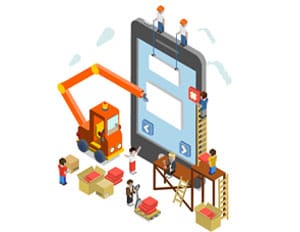Understanding How Flutter Works- (Part-1)
Introduction
Flutter has revolutionized cross-platform app development with its high-performance, expressive UI framework. But what lies beneath the surface of its beautiful UIs and smooth animations? In this blog post, we’ll embark on a journey to explore the inner workings of Flutter, unraveling its architecture and mechanisms with real-world examples.
1. The Widget Tree: At the heart of Flutter lies the widget tree, a hierarchical structure of widgets that describes the UI of the app. Let’s consider a simple example of a counter app:

1. In this example, the widget tree consists of MaterialApp, Scaffold, AppBar, Center, Column, Text, and FloatingActionButton widgets, each describing a part of the UI.
2. The Render Tree: Flutter converts the widget tree into a render tree, representing the visual elements to be painted on the screen. Each widget corresponds to a render object responsible for layout and rendering. For instance, the Text widget becomes a RenderParagraph object, and the Column widget becomes a RenderFlex object.
3. Painting and Layout: Flutter performs layout and painting to determine the size and position of each rendered object and paints them onto the screen. The layout process calculates the constraints and dimensions of each widget based on its parent and children. In contrast, the painting process renders each render object onto a canvas using the Skia graphics engine.
4. Event Handling: Flutter handles user input events, such as taps and gestures, by identifying the target render object using hit testing. For example, when the user taps the floating action button in the counter app, Flutter detects the corresponding RenderObject and triggers the onPressed callback.
5. State Management: State management is a crucial aspect of Flutter development. In our counter app example, the _counter variable is stored in the CounterAppState and updated using the setState() method. When the state changes, Flutter triggers a rebuild of the widget tree, updating the UI to reflect the new state.
Conclusion
Flutter’s internal workings are a marvel of engineering, combining a reactive framework, a retained mode rendering pipeline, and a powerful graphics engine to deliver stunning UIs across platforms. By understanding these mechanisms and their implications, developers can harness the full potential of Flutter to create rich, interactive experiences for their users.



